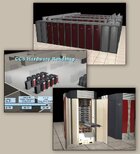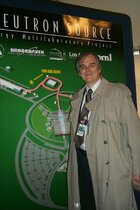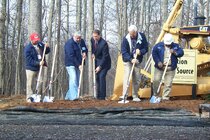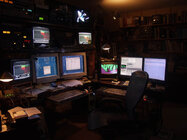I can't believe it ever took 10 min for a single frame. I mean, hell, at that rate you could just draw it! I think that would make me crazy. This is actually pretty funny. Makes me think about how my son marvels at the fact that we used to have to keep our phone attached to the wall.
Things sure change. I started on 3D graphics in the late 70s when I had to write my own software in assembly code. Then things took a major step forward in the mid to late 80s and really kicked off in the early 90s with the release of 3DStudio for dos, then later 3DSMax that ran under windows. (All this was spearheaded by Gary Yost and his small team, got a big kick when they signed on with AutoDesk) About that time I gave up software development at the Oak Ridge National Lab (too hard on my fingers and hands) and used what I'd learned about 3D to make a position for myself doing 3D modeling, rendering, animation, and video until I finally retired in 2006. In that time I did 100s of projects from quick and simple to complex - worked on my own schedule at home and nobody cared what I did as long as I kept the funding coming in! What a life!
Computers were still pretty slow in the 90s, nothing like whats available now on a simple laptop. I understand about the kids and corded phones - tell them about a party line where you listed for the your number of rings before picking up!
I had all this computer stuff and a COLOR monitor and tried to get my kids interested. One said, but dad, we grew up with this stuff, it's all NORMAL to us. (He's an architect now and the older one did graphics and video for Michelin for years before going on his own.)
Some of the complex renderings with lights, shadows, transparency, reflections, etc did take a long time to render in even in the late 90s. I did a lot of scientific/technical things tor groups to explain their work and bring in funding, including quite a bit of architectural renderings, sometimes taking video of real things from helicopters to let me dissolve seamlessly into renderings to explain the inside structure and planned modifications, or show what new buildings would look like from the ground, or how some newly invented technology worked. Things like these were fun, much was related to energy and nuclear science (nothing classified here!) - a whole lot of interviewing, measuring, photographing, digging through paperwork and drawings:


Made videos and renderings to sell projects to congress, industry, lots of PR.
At this groundbreaking I got to meet TN senators and vice president Gore. Even wore a tie (let's keep that quiet!!)
This was for a multi-billion dollar science facility that's now used by nearly 1000 researchers each year.


All good clean fun! The only problem was when I retired was finding a replacement - there were modelers and animators EVERYWHERE but not with the background to figure out and tell the scientists and engineering groups what they REALLY needed instead of what they thought they needed!
One 3D graphics friend worked on the underwater sequence in Star Wars, another on the Stewart Little movie - it was fun to see their names on the credits at the theater! Working like this was hard - work, work, work, deadline, hurry, then get done and be on the street looking for more work. Look at movie credits sometime and try to count the people working on modeling, textures, rendering, lighting, character animation...
I never worked on movies but did work closely with a ballistics expert to make models and such for analysis and gruesome murder trials - anyone interested in the blueprints to OJ Simpson's estate? Nicole's condo? The police report with Ron Goldman's stab wounds? Ack. Some of our OJ work was used on CBS news. This stuff was not as much fun as the science work.
I have just discovered that I absolutely under did it with the hd. I just shot about an hour of 4k and it came out to about 200gb. So now I'm going to have to have to order a 2TB pcie gen3 (my sys only has gen3 I guess) ssd. Extra hundred bucks.
Fortunately for us, such things are SO (relatively) inexpensive now. (but our data "needs" now are so much higher)
Looking back, I can barely comprehend the evolution. After first using punched paper tape from an $800 second-hand teletype for data storage (10 bits/sec), my first floppy disk drive was a screaming monster that would store 1.2 mb on an 8" disk! First HD drive was a whopping 10 mb (not gb), a bargain at only $1000! I think I was the only one on the block who had one.

After I really got going, all my video renderings went to a $16K BetacamSP tape deck, provided by a client. The software would back the tape up, start it moving, and lay down a single rendered frame to the end of the video. Repeat. Mess up, start over...
JKJ





